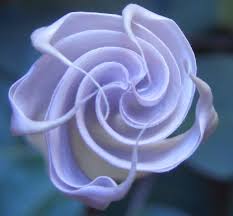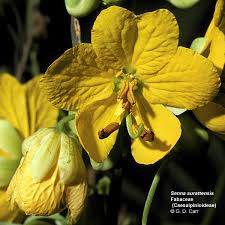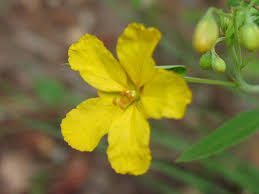It is of the following types:-
1. Valvate:- In this type of Aestivation the perianth lobes are arranged closely with small gaps between them. They remain free or united.
example:- Calyx of Hibiscus
Hibiscus
2. Twisted:- In this type of Aestivation the perianth lobes overlap one another i.e., one margin of perianth lobe is covered by the next one. In this way in all the perianth lobes one margin is inside and the other one is outside.
example:- Corolla of Datura & Hibiscus
Datura
3. Ascendingly Imbricate:- In this type of Aestivation each perianth overlaps the perianth lobes present posterior to it. So the Overlapping is Antero-Posterior.
example:- Corolla of Caesalpiniacea
Caesalpiniacea
4. Descendingly Imbricate:- It is also called as Vexillary Aestivation. In this type of Aestivation each perianth lobe covers the perianth lobe present anterior to it. So the overlapping is Postero-Anterior.example:- Corolla of Fabaceae
Dolichos
5. Quincuncial:- It is also a type of Twisted Aestivation. In this type the perianth lobes overlap in such a manner that the margins of the two perianth lobes are completely inside, and the other two perianth lobes are outside, and in the remaining one perianth lobe, one margin is inside an the other margin is outside.
example: Calyx of Ipomoea & Catharanthus
Catharanthus









Thankyou
ReplyDelete